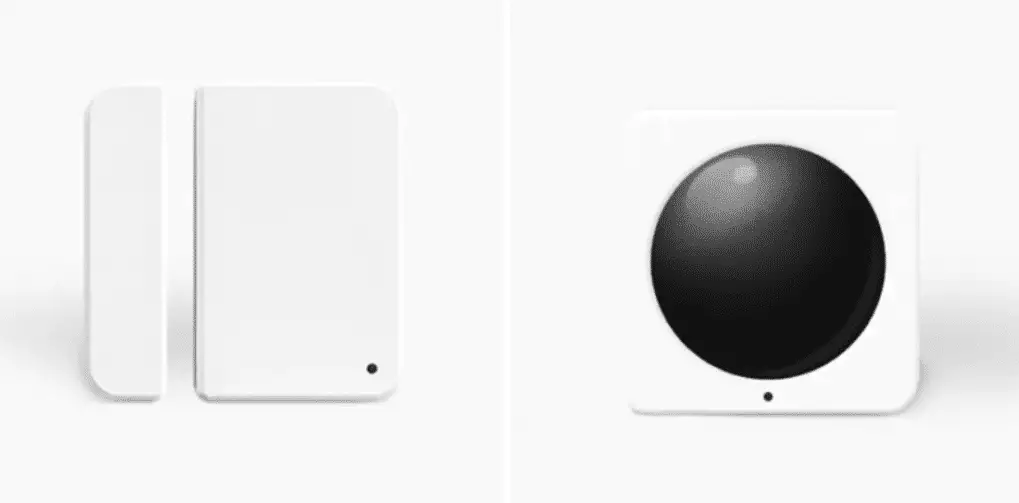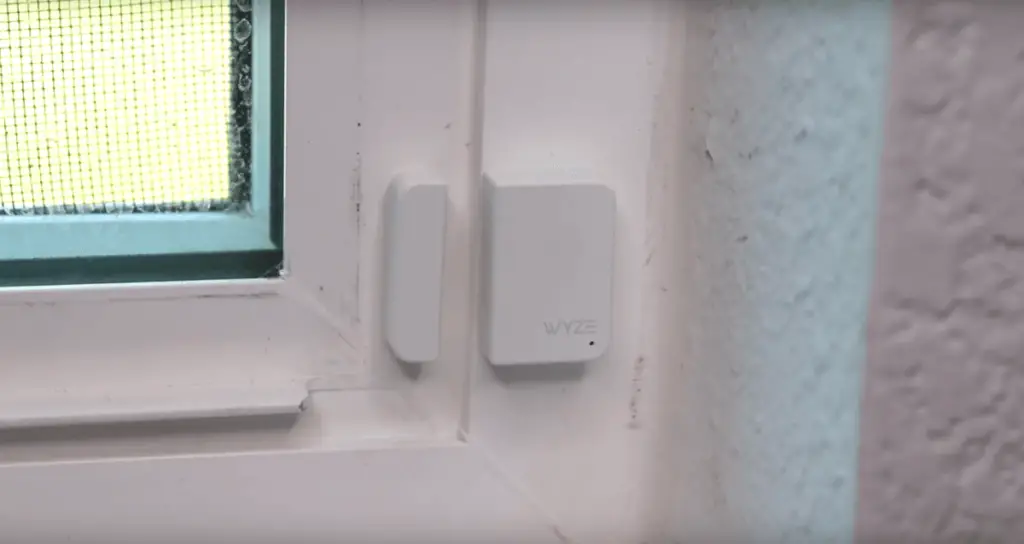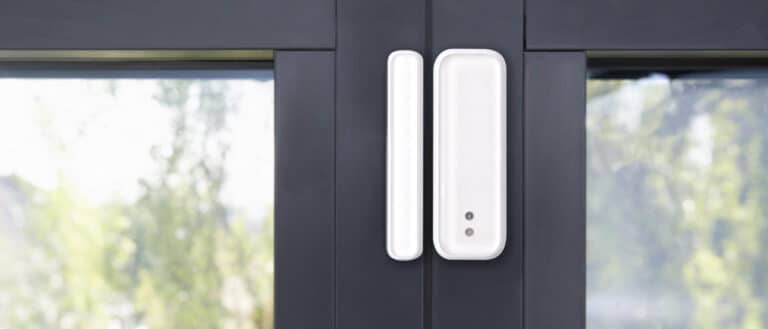Introduction
How To Override Garage Door Sensors: Garage door sensors are an essential safety feature that prevents accidents and injuries by detecting objects or people in the path of a closing garage door. However, there may be situations where you need to override these sensors temporarily, such as when performing maintenance or repairs on your garage door. In this article, we will explore the steps and precautions involved in overriding garage door sensors.
Before we delve into the process of overriding garage door sensors, it is important to understand how these sensors work. Garage door sensors typically consist of two components – a transmitter and a receiver. The transmitter emits an invisible beam of infrared light, while the receiver detects the presence of this beam. When an object or person interrupts the beam, the receiver sends a signal to the garage door opener, causing it to stop or reverse its operation.
While it may be tempting to bypass or disable orange light garage door sensors for convenience, it is crucial to prioritize safety. Garage door sensors are designed to prevent accidents and protect individuals from harm. By overriding these sensors, you are potentially compromising the safety of yourself and others. Therefore, it is essential to exercise caution and only override garage door sensors when absolutely necessary, and always follow the recommended safety guidelines.

Can you override a garage door opener sensors?
Yes, it is possible to override a garage door opener sensors, but it is not recommended. Garage door opener sensors are an important safety feature that prevents the door from closing if there is an obstruction in its path. These sensors use infrared beams to detect objects in the door’s path and will automatically reverse the door’s direction if an object is detected. This is crucial for preventing accidents and injuries.
However, there may be situations where you need to override the sensors temporarily. For example, if the sensors are malfunctioning or misaligned, the door may not close even if there is no obstruction. In such cases, you may need to override the sensors to close the door manually. It is important to note that overriding the sensors should only be done as a temporary solution until the sensors can be repaired or replaced.
To override the sensors, you will need to locate the control panel of your garage door opener. This panel is usually located near the garage door or on the ceiling. Once you have located the control panel, you can follow the instructions provided by the manufacturer to override the sensors. This may involve pressing a specific combination of buttons or using a special override key.
It is important to exercise caution when overriding the sensors and to only do so if absolutely necessary. By overriding the sensors, you are disabling an important safety feature of your garage door opener, which can increase the risk of accidents and injuries. Therefore, it is recommended to consult a professional if you are experiencing issues with your garage door opener sensors rather than attempting to override them yourself.
Should both sensors on garage door be green?
When it comes to garage door safety, having functioning sensors is crucial. These sensors are designed to detect any obstructions or objects in the path of the garage door, preventing accidents and injuries. One common question that arises is whether both sensors on the garage door should be green. In this answer, we will explore the importance of garage door sensors and discuss whether both sensors should be green.
Garage door sensors typically come in pairs, with one sensor placed on each side of the garage door. These sensors work together to ensure that the garage door does not close if there is an obstruction in its path. When the garage door is closing, an invisible beam is emitted from one sensor to the other. If this beam is interrupted by an object, the sensors send a signal to the garage door opener, causing it to stop and reverse the door’s movement.
The color of the sensors, whether green or any other color, does not affect their functionality. The color is simply a visual indicator to help homeowners and technicians identify the sensors easily. However, it is important to note that both sensors should be aligned properly and free from any obstructions to ensure their effectiveness.
While it is not necessary for both sensors to be green, it is recommended to have them both of the same color for consistency. This can help homeowners and technicians quickly identify the sensors and troubleshoot any issues that may arise. Additionally, having both sensors of the same color can prevent confusion and ensure that they are installed correctly.
Why is my garage door not sensing?
There can be several reasons why your garage door is not sensing properly. The garage door sensor is an important safety feature that prevents the door from closing if there is an obstruction in its path. When the sensor detects an object in the way, it sends a signal to the garage door opener to stop closing. If your garage door is not sensing, it can be a frustrating and potentially dangerous problem.
One possible reason for your garage door not sensing is that the sensor itself is dirty or misaligned. Over time, dust, dirt, and debris can accumulate on the sensor, blocking its ability to detect objects. Additionally, the sensor may become misaligned due to accidental bumps or vibrations. In either case, cleaning the sensor and ensuring it is properly aligned may solve the problem.
Another common cause of a garage door not sensing is a malfunctioning sensor. Like any electronic device, garage door sensors can wear out or become damaged over time. If the sensor is not functioning properly, it may not be able to detect objects in the door’s path. In this case, replacing the sensor may be necessary to restore proper functionality.
In some cases, the issue may not be with the sensor itself, but with the wiring or connections. If the sensor is not receiving power or if there is a loose connection, it may not be able to send the signal to the garage door opener. Checking the wiring and connections and ensuring they are secure and properly connected may resolve the issue.
Finally, it is also possible that there is an issue with the garage door opener itself. If the opener is not receiving the signal from the sensor, it may not stop closing when it should. In this case, troubleshooting the opener or contacting a professional for repairs may be necessary.
Can I disable the sensors on my garage door opener?
Yes, it is possible to disable the sensors on your garage door opener. However, it is important to note that tampering with the sensors can compromise the safety features of your garage door system. The sensors are designed to detect any obstructions in the path of the closing door and prevent accidents or damage. Disabling the sensors can increase the risk of accidents or injuries, especially if there are children or pets in the vicinity.
Before considering disabling the sensors, it is recommended to troubleshoot any issues you may be experiencing with them. Sometimes, the sensors may be misaligned or obstructed, causing them to malfunction. In such cases, adjusting the sensors or removing any obstructions can resolve the problem without the need to disable them.
If you still wish to disable the sensors, you should consult the user manual or contact the manufacturer for guidance. The process may vary depending on the model and brand of your garage door opener. It is important to follow the manufacturer’s instructions carefully to ensure that you do not damage the opener or compromise its functionality.
Keep in mind that disabling the sensors may also void any warranties or guarantees provided by the manufacturer. Additionally, it is important to consider the potential consequences of disabling the sensors, such as the increased risk of accidents or damage to property.
If you are concerned about the functionality of the sensors or experiencing issues with them, it is recommended to seek professional assistance from a qualified technician. They will be able to diagnose and resolve any problems with the sensors while ensuring the safety of your garage door system.
Should one garage door sensor be red and green?
When it comes to garage door sensors, the color coding of these devices is an important consideration. One common color combination used for garage door sensors is red and green. However, the question arises whether it is necessary for one garage door sensor to be red and green. In this essay, we will explore the reasons behind the use of these colors and discuss whether it is essential for a garage door sensor to have this specific color combination.
The use of red and green colors for garage door sensors is primarily for safety purposes. These colors are easily recognizable and can quickly alert individuals to the status of the garage door. The red color typically indicates that the door is closed or in the process of closing, while the green color signifies that the door is open or in the process of opening. This color coding system allows homeowners or users to easily determine the position of the garage door without having to physically check it.
Furthermore, the red and green color combination is also beneficial for individuals with color blindness. Red and green are two colors that are easily distinguishable for most people, including those with color vision deficiencies. By using these colors, garage door sensors ensure that individuals with color blindness can also understand the status of the door, promoting inclusivity and accessibility.
However, it is important to note that the use of red and green colors for garage door sensors is not a strict requirement. While these colors have become the industry standard, there are alternative color combinations that can be used. For instance, some garage door sensors use a combination of red and blue or red and yellow. These color combinations also provide clear indications of the door’s status and can be just as effective as red and green.
The use of red and green colors for garage door sensors is common and has its advantages, it is not necessarily essential for one garage door sensor to have this specific color combination. The primary goal of a garage door sensor is to provide clear indications of the door’s position, and this can be achieved through various color combinations. Ultimately, the choice of colors for garage door sensors should prioritize safety, accessibility, and ease of use for all individuals
Overriding garage door sensors can pose significant risks and consequences. One of the main risks is the potential for accidents and injuries. Garage door sensors are designed to detect objects or people in the path of the closing door and automatically reverse its direction to prevent any harm. By overriding these sensors, you are essentially disabling this safety feature, which can lead to serious accidents, especially if someone or something is in the way of the closing door.
Another consequence of overriding garage door sensors is the increased risk of property damage. Without the sensors functioning properly, the door may not stop or reverse when it encounters an obstruction, such as a vehicle or other objects. This can result in damage to the door itself, as well as any objects or vehicles in its path.
It is important to note that overriding garage door sensors may also have legal implications and code violations. Building codes and regulations often require the installation and proper functioning of safety devices, including garage door sensors. By tampering with or disabling these sensors, you may be in violation of these codes, which can result in fines or other legal consequences.
Are there any legal implications or code violations associated with overriding garage door sensors?
Overriding garage door sensors can have serious legal implications and may result in code violations. Garage door sensors are designed to ensure the safety of individuals and property by detecting any obstructions in the path of the closing door. By overriding these sensors, you are essentially disabling a crucial safety feature of the garage door system.
From a legal standpoint, overriding garage door sensors can be considered negligence or a violation of building codes. Building codes typically require the installation and proper functioning of safety devices, including garage door sensors, to prevent accidents and injuries. By intentionally bypassing or disabling these sensors, you may be held liable for any accidents or damages that occur as a result.
What are the alternative solutions or workarounds for addressing issues with garage door sensors?
When facing issues with garage door sensors, there are several alternative solutions and workarounds that can be considered before resorting to overriding the sensors. One possible solution is to check for any obstructions that may be blocking the sensors’ line of sight. Sometimes, objects such as dirt, leaves, or even spider webs can interfere with the sensors’ functionality. By cleaning the sensors and ensuring that they have a clear line of sight, you may be able to resolve the issue without overriding the sensors.
Another alternative solution is to adjust the sensors’ alignment. Over time, the sensors may become misaligned due to vibrations or accidental bumps. By carefully adjusting the sensors so that they are properly aligned, you can restore their functionality and avoid the need to override them. It is important to refer to the manufacturer’s instructions or consult a professional to ensure that the sensors are correctly aligned.
How can one ensure the safety of individuals and property when overriding garage door sensors?
When it comes to overriding garage door sensors, it is crucial to prioritize the safety of individuals and property. By taking certain precautions and following best practices, one can minimize the potential risks and ensure a safe environment.
First and foremost, it is important to understand the reasons for overriding the garage door sensors. If there is a genuine emergency or a valid reason to bypass the sensors temporarily, it is essential to proceed with caution. Only override the sensors when absolutely necessary and ensure that all individuals in the vicinity are aware of the situation.
Secondly, regular maintenance and inspection of the garage door system is vital. By keeping the sensors clean and properly aligned, one can reduce the chances of accidents or malfunctions. It is recommended to check the sensors periodically for any signs of damage or misalignment and address them promptly.
Are there any recommended guidelines or best practices for overriding garage door sensors?
When it comes to overriding garage door sensors, it is important to follow recommended guidelines and best practices to ensure the safety of individuals and property. One of the first things to consider is the reason for overriding the sensors. If it is due to a malfunction or temporary issue, it is recommended to address the root cause of the problem rather than bypassing the sensors.
If overriding the sensors is absolutely necessary, it is crucial to take certain precautions. Firstly, make sure to understand the specific instructions provided by the manufacturer of the garage door opener. They may have specific guidelines on how to safely override the sensors. Additionally, it is important to regularly inspect and maintain the garage door system to ensure it is in proper working condition.
Furthermore, it is recommended to consult with a professional or experienced technician before attempting to override the sensors. They can provide valuable advice and guidance based on their expertise. Lastly, always prioritize safety and be cautious when manually operating the garage door without the sensors. Keep a close eye on the surroundings and ensure there are no individuals or objects in the path of the door.

Conclusion
Overall, learning how to override garage door sensors can be a useful skill to have in certain situations. Whether you need to temporarily disable the sensors for maintenance or repair purposes, or if you accidentally trigger the sensors and need to manually close the garage door, knowing how to override them can save you time and frustration. However, it is important to remember that overriding the sensors should only be done when absolutely necessary, as they serve an important safety function.
When attempting to override garage door sensors, it is crucial to follow the manufacturer’s instructions and guidelines. Each garage door system may have different methods for disabling or bypassing the sensors, so it is important to consult the user manual or contact the manufacturer for specific instructions. Additionally, it is important to exercise caution and be aware of the potential risks involved in overriding the sensors. By disabling the sensors, you are essentially bypassing an important safety feature, so it is important to proceed with caution and only do so when absolutely necessary.
It is also worth noting that overriding garage door sensors may void any warranties or insurance coverage you have on your garage door system. Manufacturers typically design their systems with safety in mind, and disabling or bypassing the sensors may be considered a violation of the terms and conditions of your warranty or insurance policy. Therefore, it is important to weigh the potential risks and consequences before attempting to override the sensors.
To override garage door sensors can be a useful skill to have in certain situations. However, it is important to exercise caution and only do so when absolutely necessary. Following the manufacturer’s instructions and guidelines, as well as being aware of the potential risks and consequences, is crucial. Ultimately, the safety of yourself and others should always be the top priority when dealing with garage door systems.

